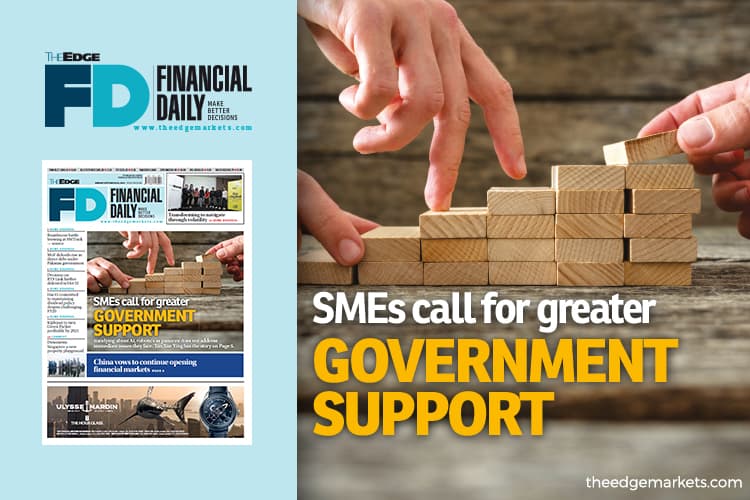
This article first appeared in The Edge Financial Daily on September 30, 2019
KUALA LUMPUR: Malaysia’s industries have been repeatedly told they need to transform to break their reliance on low-cost competitiveness and labour-intensive production.
However, such transformations require disruptive strategies and massive investments that could be burdensome on businesses, especially small and medium enterprises (SMEs).
Therefore, the Federation of Malaysian Manufacturers president Tan Sri Soh Thian Lai said the government should, in Budget 2020, address some low-hanging issues first, like tax incentives.
These include removing the time bar for reinvestment allowance that expires this year, as well as for the accelerated capital allowance on automation expenditure, but with a higher qualifying expenditure of RM10 million, instead of RM2 million.
The automatic double tax deduction on research and development should also be extended beyond SMEs to cover all companies as long as they have the capability to spur innovation, said Soh, while findings and recommendations of the independent committee on foreign workers, which was set up a year ago, should be made public.
SMEs, which contribute over 38% to Malaysia’s total gross domestic product, is expected to be one of the focal points of Budget 2020, which is slated to be tabled at Parliament in a fortnight.
Last week, the ministry of international trade and industry said it has forwarded its request to the government to seek more allocation for SMEs in the budget, mainly to help them adopt the Fourth Industrial Revolution.
Industry experts contacted by The Edge Financial Daily highlighted that the government should take note that SMEs’ concerns are embedded in the conventional operation mode, and that bandying about artificial intelligence (AI) or robotics as the panacea does not address the immediate issues faced by them, especially those in the manufacturing sector.
According to Small and Medium Enterprises Association Malaysia national secretary Yeoh Seng Hooi, many manufacturing-based SMEs are still scrambling to adopt basic software systems that are meant to improve day-to-day operations.
“Many of these manufacturing-based SMEs do not even adopt enterprise resource planning systems, while those in the business-to-consumer space don’t have the resources to utilise (customer relationship management).
“Bandying about AI and robotics as the panacea does not address the immediate issues faced by many SMEs in the manufacturing sector,” Yeoh told The Edge Financial Daily.
The availability of financing to SMEs is no longer a major limiting factor, said Yeoh, since many commercial banks are allocating billions of ringgit as financing for SMEs. The crux of the issue now, he said, is whether these SMEs are bankable, and do they warrant the access to private funds.
“Government policies should also be intended for the targeted audience. For instance, the role of development financial institutions should be to lend to SMEs based on cash flow rather than purely collateral. Otherwise, it defeats the purposes as funding ends up with SMEs that are subsidiaries of public limited companies and government-linked companies.
“The credit committee should target the viability of the project or business, rather than how much asset you can pledge. It does not make any economic sense of having development financial institutions if they are going to have the same lending criteria as commercial banks,” he added.
Meanwhile, in order for the government to achieve its target of having at least 50% contribution to gross domestic product from SMEs in 2030, the government should centralise all its assistance — including grants and incentives — while focusing on sectoral and cluster development, said SME Malaysia national president Datuk Kang Hua Keong.
The SME sector, which is charting commendable export growth, will also be better supported if the government allocates more budget for the Market Development Grant, offer a tax rebate or a special income tax rate of 10% on exports, he pointed out.
Kang is of the view that a bigger allocation for the tourism sector is a wise move as this may benefit SMEs, which are mostly in the service industry, adding a policy could be laid down on government procurement from competitive SMEs.
Given the issues of rising costs and labour scarcity, the Malaysian Estate Owners’ Association (MEOA) is proposing that foreign worker levy be reduced by 20% from 2020, and that a further percentage decrease in the levy be given to companies that are able to increase the number of hectares worked per foreign worker, that is the productivity of their foreign workers.
The MEOA is also calling for part of the money collected from the levies be ploughed back into creating a training institution or the development of specialising machines, systems, and technology for the industry to increase its efficiency and productivity.
“High levies, consistent changing of rules and policies, labour quota — these would stifle businesses.
“Also, (the) Malaysian Investment Development Authority should be giving the same or better incentives for automation for the plantation industry, if the incentives given to factories are to reduce labour and to increase productivity of that sector,” said MEOA president Jeffrey Ong.